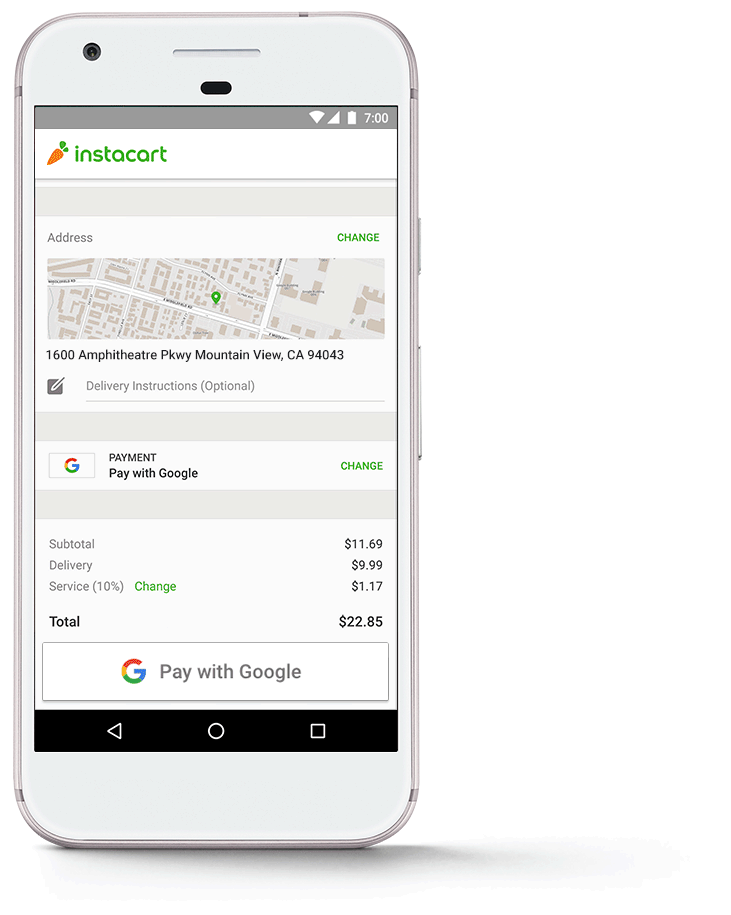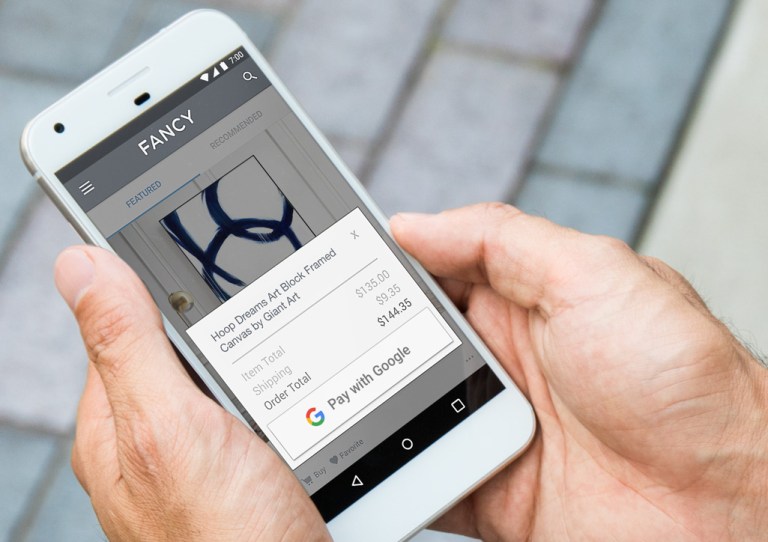If the promise of mobile payments is speed and convenience, delivering on the promise – and turning it into practice – is a bit tougher.
Small screen, small window of time to get the transaction done. Session timeouts? You’ve had ‘em, no doubt, perhaps fumbling through passwords and shipping address details. The idea of commerce anytime, anywhere may give way to frustration anytime, anywhere.
To that end, Google said Monday that online checkout is going to get a bit speedier. The concept, rather simply, is: Google as mobile wallet.

This news builds on a May announcement at Google I/O, its annual developer’s conference, which gave consumers and developers a hint of how registered Google credentials can be used to pay across apps and mobile devices. Users transact using credentials linked to their Google accounts spanning Gmail, Google Play, YouTube and Chrome. For end users, a “Pay with Google” button lets them check out with any card housed in their Google accounts.
The payments functionality comes via the API announced in May, which is now available to retailers and developers.
In an interview with Karen Webster, Pali Bhat, Google’s vice president of product management for payments, said the Monday announcement means “fast, easy and safe payments for Google users everywhere.” Pay with Google extends to anyone who has added a tokenized payment to their Google account and has added credit or debit cards to products like Google Play or Chrome. Bhat said users will now be able to start paying with Google “without any additional work.”
Advertisement: Scroll to Continue
Bhat told Webster that this is a global launch, initially on Android devices, and across mobile devices and digital assistants. He said that by storing information on Google, the company is then able to transmit the shipping address and payment information, including the CVV, to merchants across payments processors, such as Adyen, Braintree and Stripe, which then take care of processing the transactions between parties.
For consumers who buy from merchants integrating the payment API, users confirm their identities via fingerprint, password or other authentication processes. In the event that a consumer uses a guest checkout option, the Chrome browser will autofill data fields. According to Bhat, either method “removes a whole lot of friction” from the checkout process.
Said Bhat: “What Pay with Google really encompasses is a super set of wallets supported with Android Pay in terms of credentials … all the credentials across Google products are in one place.”
For in-store commerce, he told Webster, tokenized credentials with Android Pay will still work at EMV contactless terminals, and will be a payment option within Pay with Google.
The company said Monday that its checkout functionality will integrate with Pay with Google merchants ranging from DoorDash to StubHub to iFood (in Brazil) and Dice (based in the U.K.) – with more to come.





